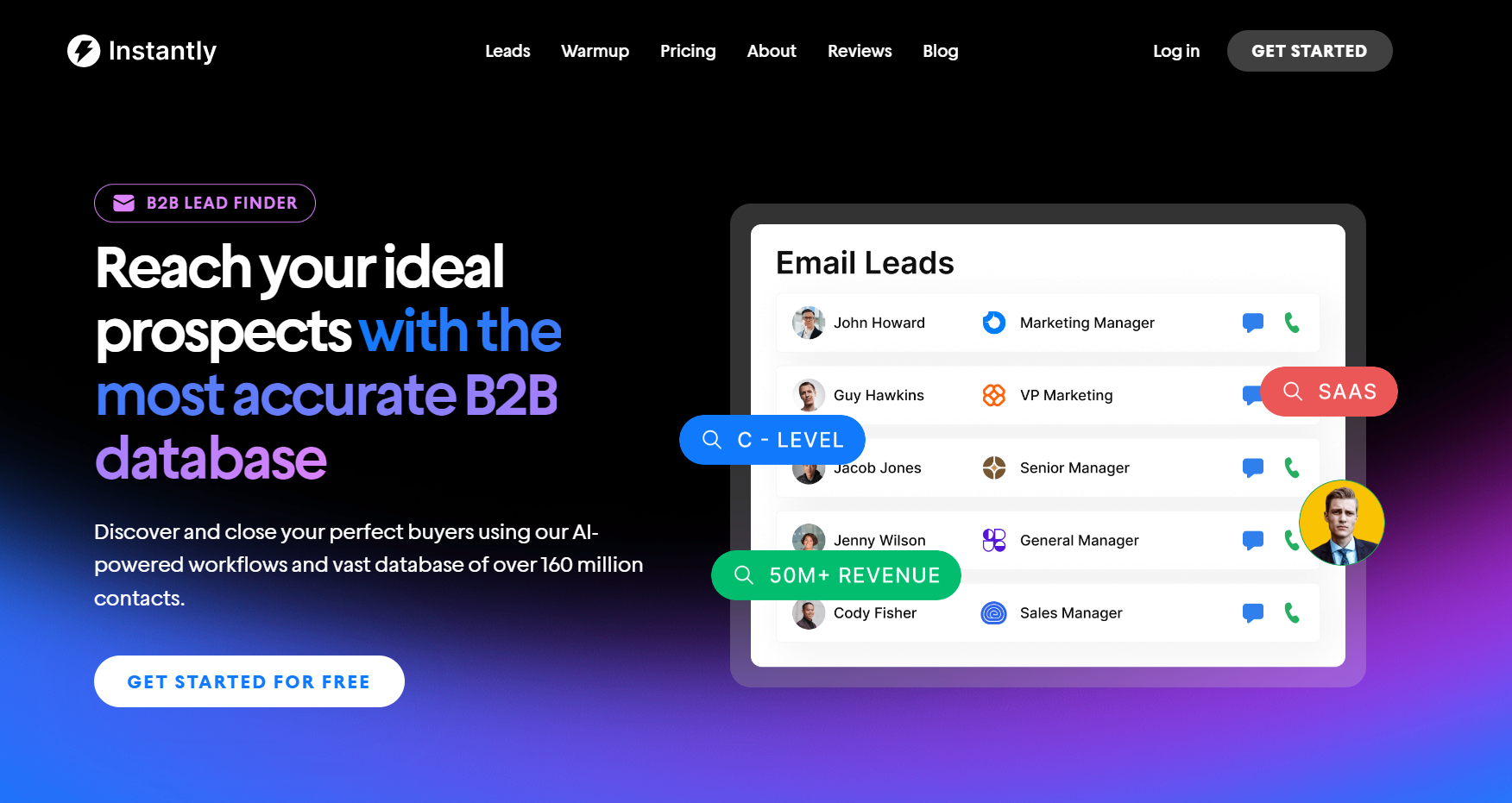Growth hacking has been around for over a decade. Some call it guerilla marketing, performance marketing, or the predecessor to product-led growth.
As a core concept, growth hacking is finding the most cost-effective way to generate and scale your business's revenue. So, how do growth hacking strategies compare to modern marketing?
There’s a lot of overlap between “growth hacking” and marketing. Clearly defining the nuances lets you unlock the full potential of growth hacking strategies.
In this article, we’ll be discussing:
- What is growth hacking
- Growth hacking vs traditional digital marketing
- Why companies struggle with growth hacking
- Best growth hacking strategies to implement in 2024
- Growth hacking best practices
What Exactly is Growth Hacking?
“Growth Hacking” is a term coined in 2010. At the time, traditional marketers and salespeople called it a fad or a simple revamping of guerilla marketing. But that wasn’t the case.
Growth hacking fundamentals are based on product—and data-driven acquisition strategies, which are still used in most modern marketing strategies.
The most significant difference is the availability of testing, lead generation, and engagement tools. It’s become more of a practical mindset that helps sales, marketing, and development teams think of creative solutions for growth through data-driven best practices.
One word to sum up growth hacking is testing—leveraging data to identify product-market fit and testing strategies until you find a growth vehicle that can be scaled through automation.
Growth Hacking Vs. Traditional Digital Marketing
Sean Ellis always emphasizes that “growth hacking” differs from traditional marketing. The main difference stems from how growth hacking found its roots within the start-up community.
Most startups don’t have a large marketing budget, so traditional ad creation methods to reach a broader target audience weren’t a sustainable acquisition strategy.
So, Sean worked backward. He said that growth hacking begins with finding people who love your product and figuring out why.
Once you understand why people love your product, you can create sustainable acquisition pipelines on a small marketing budget.
This is only possible when marketing, sales, and development teams are aligned, which is one reason many companies fail at growth hacking.
Why Companies Fail at Growth Hacking

If growth starts to plateau or acquisition costs get higher than a customer’s lifetime value, that indicates underlying issues in your growth hacking strategies in the following areas:
Retention and Engagement
Customer acquisition costs are expensive for most industries within B2B SaaS. Focusing solely on generating new customers isn’t sustainable, and you can’t rely on replacing existing ones.
You need to find ways of encouraging customers to keep using your product. One of the main reasons customers stop using certain products is a mismatch or lack of product-market fit.
Mismatch of Product-Market Fit
Sean Ellis says, “Product-market fit is critical before you get obsessive on growth hacking.” You could have a great product or service, but are you selling in the right market?
The companies primed for exponential growth are those with clear signs of product-market fit. Here are the tell-tell signs you should look out for:
- If people are willing to pay for your product now
- There is buzz around your product or brand
- Users stick around after initial demos
- Users express disappointment if your product goes away
- Customer acquisition costs are lower than customer lifetime value (CLTV)
A great example of a company that nails product-market fit is Peak Design, a camera equipment manufacturer.
They launch new products on Kickstarter, allowing them to see if their audience wants their new products without the risks of manufacturing costs. The main reason why their products get fully funded on Kickstarter is because they understand the needs of their core audience.
Companies Not Knowing Their Core Audience
Growth hacking won’t be effective if you spend resources on the wrong target audience. For example, even scalable strategies like cold email marketing automation won’t get results if your emails don’t answer your audiences’ needs.
Before implementing growth hacking strategies, ensure you’ve built your exact ICPs and buyer personas. The best way to do so is by keeping track of data and analytics.
No Clear Key Performance Indicators (KPIs) and Metrics
Businesses need the right tools, resources, and enablement strategies to contextualize data into actionable information. The metrics and KPIs you need to focus on depend on the growth hacking strategies you choose to implement.
If you’re doing cold email outreach, the KPIs to focus on include reply, open, and conversion rates. For social media marketing, you must look at engagement and reach.
KPIs and metrics are the most important factors to consider as they directly impact how you test and iterate the growth hacking strategies you’re trying to implement.
Best Growth Hacking Strategies to Implement This 2024

Whether you’re a startup trying to reach its first 1,000 customers or an established business looking to scale, here are nine growth-hacking strategies to help overcome plateaus and gain consistent, predictable revenue.
Cold Email Outreach
Cold email outreach is a significant growth hacking strategy when done holistically with the customer in mind. The strategy is the most scalable and sustainable acquisition vehicle for any B2B or SaaS company.
With the right tools, you can immediately identify your exact ICPs and build an email list of customers who need the same solution you’re selling. Cold email is scalable because it can be automated and hyper-personalized at a fraction of the cost of traditional marketing methods.
The “hacking” part comes down to hyper-personalization—which starts during the lead generation stage. Tools like Instantly B2B Lead Finder have dozens of filters you can use to pinpoint your exact ICP.

For example, one of the most popular growth hacking strategies is host/parasite marketing. You find businesses that sell complementary solutions and fill the gaps in their products.
With Instantly B2B Finder, you can filter to find verified B2B companies using specific tech stacks, then position your product as an add-on for streamlining daily tasks.
Create a Pre-Launch Email List to Build Hype
Growth hacking works with virality. If there’s a buzz around your product, that’s a clear sign of a product-market fit. Building a pre-launch or email waitlist is an excellent strategy for creating buzz.
Have your target audience sign up for a waitlist, then create a strategy centered around a product rollout or a go-to-market strategy. Here’s an example from the Browser Company and their Arc Web Browser.
The Browser Company sent nurturing emails to people who signed up for the waitlist for Arc in Windows. As people waited, their product was still top-of-mind, feeding into the anticipation of its arrival.
Zeroing In on Your ICP
Building an ideal customer profile (ICP) is fundamental to digital marketing, especially in growth hacking. The more you segment and qualify prospects, the more effective your strategies become.
You need to be specific with who your target customers are, where you can find them, and what tools they use to complete their essential daily tasks. Niche down as much as possible, as every growth hacking strategy is built on top of your ICPs.
Let’s use email marketing as an example. You can use dozens of segmentation strategies, such as segmenting based on demographics, email engagement, or purchase history.
If you see a segment of your prospects consistently engaging with your emails, add them to a separate campaign. Then, when promoting products, send personalized and tailored emails. They are more likely to purchase from you since they have already shown interest.
Connect With Businesses That Complement Yours
Competition is heavy in almost every industry, but if you look in the right places, you'll find unlimited collaboration opportunities.
The key here is finding businesses that sell products that complement yours. Let’s say you’re selling email automation software. Your ICPs could be salespeople and marketing teams.
Both are likely using a CRM to manage leads. If that CRM has an API that you can integrate with, that means you have an opportunity to market your product as an essential add-on that can streamline workflow.
Build a Community Around Your Product
Nothing beats word-of-mouth and social proof. Creating a community centered around your product provides you with both. But be sure to curate the content in your community.
The content shared should benefit all members and be curated to streamline learning. Members can post best practices, strategies, and questions.
When a member says, “I’m not seeing results with XYZ product,” another member or someone from your team could help them figure out underlying issues and assist others facing similar problems. When the issue is widespread, the development team could look into it.
Get Feedback and Iterate Products
No product is perfect out of the box. Continuous improvement requires consistency, testing, and iteration. That’s why it's essential to get feedback from your users.
Feedback gives you a direct line to what users like and don’t like about your product. When a feature that’s constantly requested gets added, users feel like they have a voice and can contribute.
More importantly, it lets users know that their needs are being addressed. You get to build brand loyalty, which can translate into more organic growth for your business through referrals and word-of-mouth.
Leverage Automation, Sales Intelligence, and Enrichment Tools
A customer-centric sales process drives growth. That means creating a personalized experience at scale. You can’t do this manually for every prospect. That’s where automation, sales intelligence, and enrichment tools come in.
Having these tools in your tech stack can streamline any growth hacking strategy, especially automated cold email outreach campaigns.
You can leverage sales intelligence during prospecting to find leads that fit your ICP. Then, enrich each lead with relevant and timely information, such as company updates or milestones.
Tools like Instantly can use the data to create a hyper-personalized, automated email sequence. The best part is that you can iterate on active campaigns with A/B testing optimizations.
Run A/B Testing
A/B testing is a must when implementing growth-hack strategies. First, you need a control variable. Then, you need to identify the key metrics you’d be A/B testing against.
With Instantly, you can create multiple email variations within the same campaign. Let’s say email A only used {{first name}} and {{company name}} for personalization and went for a concise approach.
Meanwhile, email B could include personalization that leverages data from sales intelligence and enrichment tools like Instantly B2B Lead Finder.
When you’ve sent enough emails for the volume to be statistically relevant, Instantly can identify winning emails and send them to the rest of your email list.
Gamification
Engagement breeds virality. If your product has a gamification aspect, it improves the chances of going viral. You see this with Duolingo, Waze, and Grammarly.
Duolingo lets you see your streak and how many days you’ve consistently practiced. It also has features like experience and challenges to keep users engaged and using the app consistently.
During the early launch, Waze rewarded users who contributed to unlocking new roads. Waze even has features for adding custom voice packs.
Gamification makes products fun and engaging. The more fun and engaging a product is, the more likely users come back to it day after day.
TLDR
Growth hacking provides businesses with cost-effective ways to scale revenue. To recap, here are nine growth hacking strategies that can be applied to most companies in B2B and SaaS:
- Creating a pre-launch email list to generate buzz
- Building a community around your product and brand
- Getting feedback and implementing suggestions
- Leveraging automation, sales intelligence, and enrichment tools
- Automated cold email outreach
Cold email outreach as a growth hacking vehicle is cost-effective and infinitely scalable. Start scaling today!




